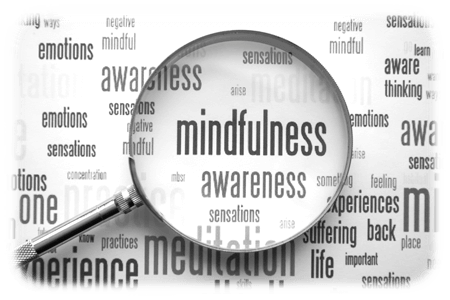Blog
Exploring The World of Mindfulness: How do I do it? (Part 3)
Mindfulness has recently exploded and is highly popular across the UK. There are lunch hour sessions available, hundreds of workshops, retreats, it is even being taught in schools. Everyone is talking about it. In this three part series, I will try to explain what it is, the benefits of it, dispel the many common myths around it, provide some of the evidence base for it and describe how to do it using different techniques.
This is part 3 in a blog series about Mindfulness. Part 2 is here.
Part 3: Right, now I know what it is, how do I do it?!
Here, we can teach you the skill of how to do mindfulness, but it’s the informal, day to day practice that is the most important (Hayes, 2005). So, when should I practice? Well, the general aim is all the time! However, when we are not used to doing something, it doesn’t usually enter our minds automatically, it initially requires effort to remember and set aside time to practice. So Nicole in her previous blog talked you through an example, which is a lovely one to start with.

Here are some tips to get you going:
- I recommend trying to start with short practices (say a few minutes) and with something that can become part of your routine to help you, for example brushing your teeth mindfully (I hope you do this daily!), or eating your breakfast mindfully. Once it becomes more natural, more of a habit, you can decide whether to continue with set, daily practices. Routine here can be useful, for example I take a mindful shower at the end of each working day as it helps me leave work behind and it’s a few moments where I can focus just on the shower.
- Basically, you can be mindful of anything, even the washing up.
- It can be a good idea to use all of your senses to help you in any practice, so think about what you can see, hear, smell and taste.
- When being mindful of an object try to look at it is though you have never seen it before. Imagine you are an alien from outer space, be curious, discover things you have never noticed before about the object. I promise, foods that you often eat without thinking and objects you have never paid attention to before will bring new experiences. Try being mindful of a grape or pine cone to get you started.
- When doing a practice it’s a good idea to get into a comfortable position, feet flat on the floor. Don’t worry too much about finding somewhere quiet, the focus of mindfulness is to notice when your mind wanders off and bring it back rather than not get distracted so disturbances can be useful practice! Additionally, I would recommend doing mindfulness with your eyes open as the idea is to incorporate into your life and we don’t walk around with our eyes shut.
| Script | Audio | |
|---|---|---|
| Mindfulness of thoughts | Read | Listen |
| Mindfulness of breath | Read | Listen |
| Mindfulness of eating a piece of fruit | Read | Listen |
Some ideas for mindfulness practice:
- A mindful walk: use all your senses to take note of sounds, what you can see, smell etc.
- Listening to a piece of music (anything you like): really try to tune into the different sounds, layers of instruments, sensations in your body in response to the music, emotions it evokes for you.
- A mindful cup of tea/water/coffee: we usually just drink on the go. Try to be mindful of making your drink, every step from filling the kettle to stirring the tea to drinking it.
- Eat a grape mindfully (or any fruit): really pay attention to the colours, the smell, the feel of the grape. Bite into it and notice the sensations in your mouth, then pay attention to the grape section in your hand, all the colours, patterns, water droplets etc before mindfully eating the rest of it.
- Read something mindfully. Do not attempt the whole book at this stage, but perhaps a page or a chapter, trying to focus on what you are reading and any emotions or body sensations that might arise as you read.
- Do one thing in the moment: when at work or having a conversation with someone, do not try to do anything else at the same time. No multi-tasking for this one! Really be in the moment with the thing you have chosen to practice being mindful of, whether it be a TV programme, writing a report or talking to a friend or colleague.
As always, when your mind wanders (and it will), keep gently returning it to the thing you want to focus your attention on in that moment.
Recommended Resources to help you get started
Apps:
Headspace
Waking up – Sam Harris
Insight Timer
Books with CDs
Mindfulness for Dummies by Shamash Alidina
Mindfulness. A practical guide to finding peace in a frantic world.
The Mindful way through depression. Mark Williams, John Teasdale, Zingel Segal and Jon Kabat-Zinn
Websites
http://www.getselfhelp.co.uk/mindfulness.htm has some useful downloads
http://www.freemindfulness.org/download
References
Hayes, S. C. (2005). Get out of your mind and into your life. The new Acceptance and Commitment Therapy. New Harbinger Publications Inc.

